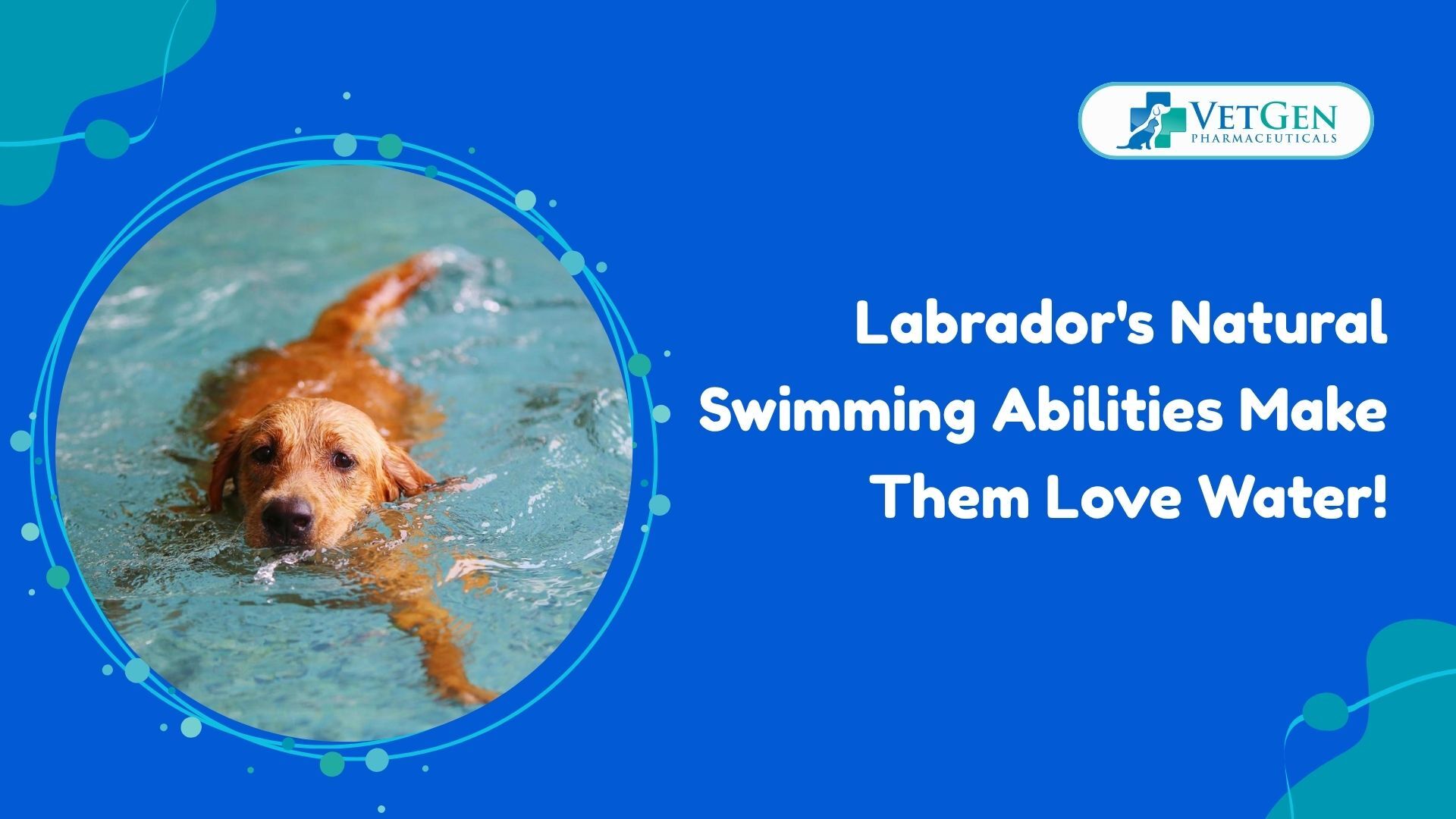Ever noticed how your Labrador can’t resist a splash in the nearest puddle, pond, or pool? It’s not just playful behavior. It’s in their DNA! Labradors are natural-born swimmers, and their love for water is deeply rooted in their history and physical makeup.
Originating from the St. John’s water dog in Newfoundland, these dogs were bred to assist fishermen by retrieving nets and hauling lines from icy waters. Their physical characteristics, such as webbed feet, a water-resistant double coat, and an otter-like tail, make them exceptional swimmers.
But what exactly makes Labradors so enamored with water? Beyond their physical traits, studies have shown that Labradors are more attracted to water than to social stimuli, highlighting their innate affinity for aquatic environments.
In this blog, we’ll explore the reasons behind your Lab’s aquatic affection, exploring their history, anatomy, and the benefits of swimming.
Labradors' History and Their Aquatic Origins
The Labrador Retriever’s affinity for water dates back to their ancestors, the St. John’s water dogs of Newfoundland. These dogs were indispensable to fishermen, retrieving nets and fish from the frigid Atlantic waters. Their exceptional swimming abilities and work ethic made them invaluable companions on fishing boats.
In the 19th century, these dogs were brought to England, where they were bred with other retrievers to enhance their hunting and retrieving skills. The result was the modern Labrador Retriever, a breed that retained its ancestors’ love for water and exceptional swimming capabilities.
Physical Traits of the Labrador
Labradors possess several physical characteristics that make them exceptional swimmers:
- Webbed Feet: Their toes are connected by a membrane, acting like natural flippers that provide excellent propulsion through water.
- Water-Resistant Double Coat: Labs have a dense, short double coat that repels water, keeping them warm and buoyant even in cold conditions.
- Otter-Like Tail: Their thick, strong tail acts as a rudder, aiding in steering and balance while swimming.
- Muscular Build: Labradors have a strong, athletic physique that provides the power and endurance needed for swimming long distances.
These features not only make swimming effortless for Labradors but also contribute to their enjoyment of water activities.
The Science Behind Labradors' Attraction to Water
A study found that Labrador Retrievers are more attracted to water than to social stimuli, such as other dogs or humans. In the study, Labradors consistently chose to interact with water over engaging with people or other dogs, highlighting their innate preference for aquatic environments.
This strong attraction to water is believed to be a result of their breeding history and the reinforcement of water-related tasks over generations. Their natural inclination towards water is not just a behavioral trait but a deeply ingrained aspect of their genetic makeup.
Health Benefits of Swimming for Labradors
Swimming isn’t just fun for Labradors; it’s also incredibly beneficial for their health:
- Low-Impact Exercise: Swimming provides a full-body workout without putting stress on joints, making it ideal for dogs with arthritis or hip dysplasia.
- Weight Management: Regular swimming helps burn calories and maintain a healthy weight, reducing the risk of obesity-related health issues.
- Cardiovascular Health: Swimming strengthens the heart and improves circulation, contributing to overall cardiovascular fitness.
- Mental Stimulation: Engaging in water activities keeps Labradors mentally stimulated, reducing boredom and associated behavioral problems.
- Cooling Off: In hot climates, swimming helps Labradors regulate their body temperature and prevent overheating.
Incorporating swimming into your Labrador’s routine can enhance their physical and mental well-being.
Encouraging Your Labrador's Love for Water
While most Labradors take to water naturally, some may need encouragement:
- Start Young: Introduce your Labrador to water at a young age to build confidence and familiarity.
- Use Positive Reinforcement: Reward your dog with treats and praise when they engage in water activities.
- Provide Safe Access: Ensure that swimming areas are safe, with gradual entry points and no strong currents.
- Use Toys: Floating toys can entice your Labrador to enter the water and make swimming more enjoyable.
- Be Patient: Allow your dog to explore water at their own pace, and never force them to swim if they’re uncomfortable.
With time and encouragement, even hesitant Labradors can learn to enjoy the water.
Safety Tips for Swimming Labradors
To ensure your Labrador’s safety during water activities:
- Supervise Always: Never leave your dog unattended near water.
- Check Water Conditions: Avoid areas with strong currents, sharp objects, or harmful algae blooms.
- Rinse After Swimming: Rinse your dog’s coat to remove chlorine, salt, or debris that can cause skin irritation.
- Monitor for Fatigue: Watch for signs of exhaustion, such as heavy panting or difficulty swimming, and provide rest as needed.
- Use Life Vests: For added safety, especially in open water, consider using a canine life vest.
By following these precautions, you can ensure that swimming remains a safe and enjoyable activity for your Labrador.
Conclusion
Labradors’ natural swimming abilities and love for water are more than just charming traits; they’re integral to their health and happiness. Regular swimming can provide physical exercise, mental stimulation, and a joyful outlet for their innate instincts. At VetGen Pharmaceuticals, we’re dedicated to supporting your Labrador’s well-being. Visit our website to get more information and tips about your Labrador.
Frequently Asked Questions
Are all Labradors natural swimmers?
While most Labradors have a natural affinity for water due to their genetics and physical traits, some dogs may be hesitant or cautious around water. Early exposure and positive reinforcement can help build their confidence and encourage them to enjoy swimming.
How often should my Labrador swim?
Swimming frequency depends on your dog’s health, age, and fitness level. Generally, 2–3 times a week is great for exercise and mental stimulation. Always monitor your dog for signs of fatigue and avoid overexertion.
Can swimming help with my Labrador’s joint issues?
Absolutely! Swimming is a low-impact exercise that reduces stress on joints, making it ideal for Labradors with arthritis or hip dysplasia. It helps build muscle strength and improves mobility without causing pain.






